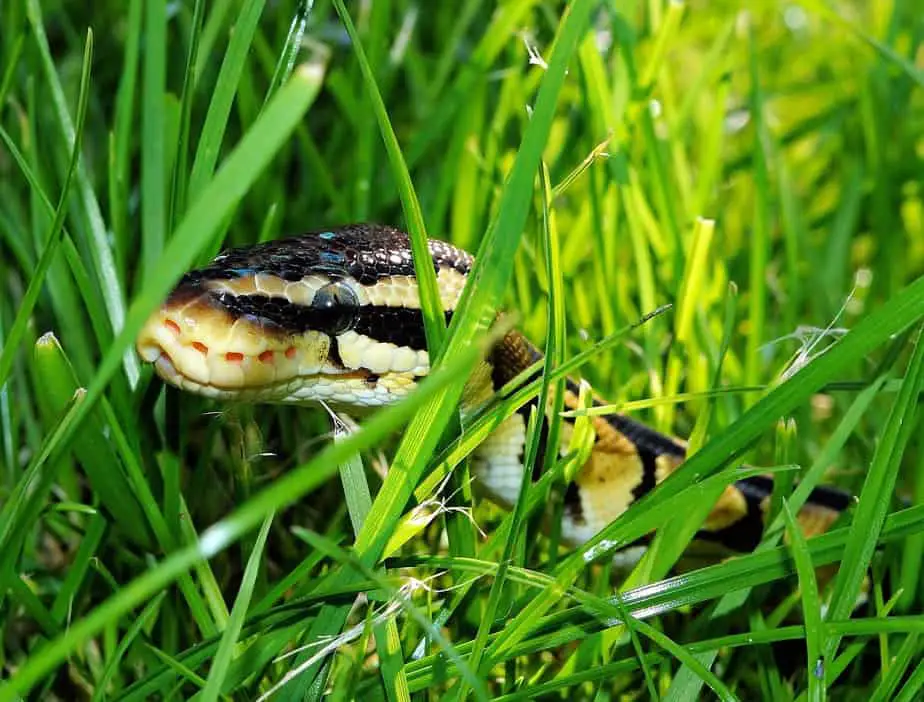The warm spring and summer days bring out all kinds of creatures, including the not-so-cuddly-and-cute critters, like garden snakes. Watching a snake slither across your green lawn may lead you to wonder what garden snakes eat that would bring them to your yard. Or, you may be considering purchasing a garden snake species as a pet, and are trying to prepare for their meals. So, what do garden snakes eat?

In this article, we’ll be discussing the importance of garden snakes to your backyard’s ecosystem and their diet!
Table of Contents
The Importance of Garden Snakes
Garden snakes, as creepy as it may be to see them slither across your yard, are an essential part of your garden’s ecosystem. A garden snake’s diet is what prevents your backyard from being overrun by garden pests such as rats, mice, and frogs.
Snakes act as both predator and prey in the ecosystem, and as the predator, will keep the pest population under control — which is especially good news for your gardens and home, both of which are more protected from destructive rodents and other pests when snakes are present. As prey, garden snakes provide a food source for large birds such as hawks and eagles, which in turn keeps the snake population under control.
Without garden snakes, disease-carrying rodents will multiply to unnatural population size, pouring into urban and developed areas, and disrupting the naturally-occurring ecosystem. When ecosystems are disrupted, intervention by people is a necessity to get it back under control.
What Garden Snakes Eat in the Wild
Garden snakes are opportunistic carnivorous eaters and will feed upon available small animals. In areas where large water sources are uncommon, such as in your backyard, snakes will eat rodents such as mice, squirrels, small rabbits, chipmunks, and rats. If they can catch them, they’ll also feast on birds, and their eggs occasionally.
In areas where there is water, such as near ponds, lakes, or streams, a garden snake, like the common garter snake, will alter their diet to fish (if available), frogs, tadpoles, lizards, and small mammals that live in the tall grass near the body of water.
Very rarely will garden snakes hunt pets that aren’t rodents, such as kittens or puppies. This is simply because pets are generally too large for the snakes to consume, as garden snakes (like all snakes) swallow their prey whole.
What to Feed Your Pet Garden Snake
Pet garden snakes, like wild garden snakes, can eat a varied diet.
Depending on your garden snake’s species, you can feed your snake fresh or frozen mice, fish, earthworms, lizards, hamsters, and frogs or toads. Many snake owners are opposed to the idea of feeding their snakes live animals, but to keep your snake as healthy as they would otherwise be in their natural environment, you may have to make an exception OR purchase fresh and frozen dead food sources, such as mice.
Feeding Frozen Animals
Frozen prey distributors, such as Layne Labs, offer a variety of humanely-euthanized prey animals as snake food; including different-sized rats, mice, colored frozen mice and rats, frozen chicks, rabbits, and birds. Frozen prey is euthanized and frozen quickly to retain as many nutrients as possible for the snake.
Frozen prey is meant to be dethawed before feeding time. The trouble with frozen feeders is that some snakes have a hard time transitioning to the limp prey. To encourage feeding, use feeding tongs to wiggle the dethawed prey to make it appear alive. There are other ways to encourage feeding, such as offering a small prey item, and feeding at night (when the snake is most active).
Final Thoughts
Most garden snakes will feast on small mammals such as mice and rats. Depending on the species found in your area, or your pet snake’s species, garden snakes will also feed on toads and frogs, fish, tadpoles, birds, chicks, and eggs.
Snakes are an essential part of a natural ecosystem. Whenever you see a garden snake passing through your yard, be sure to keep your distance to avoid any unwanted encounters. We hope our guide to a garden snake’s diet has helped you understand more about your local ecosystem or prepare for your reptilian pet!